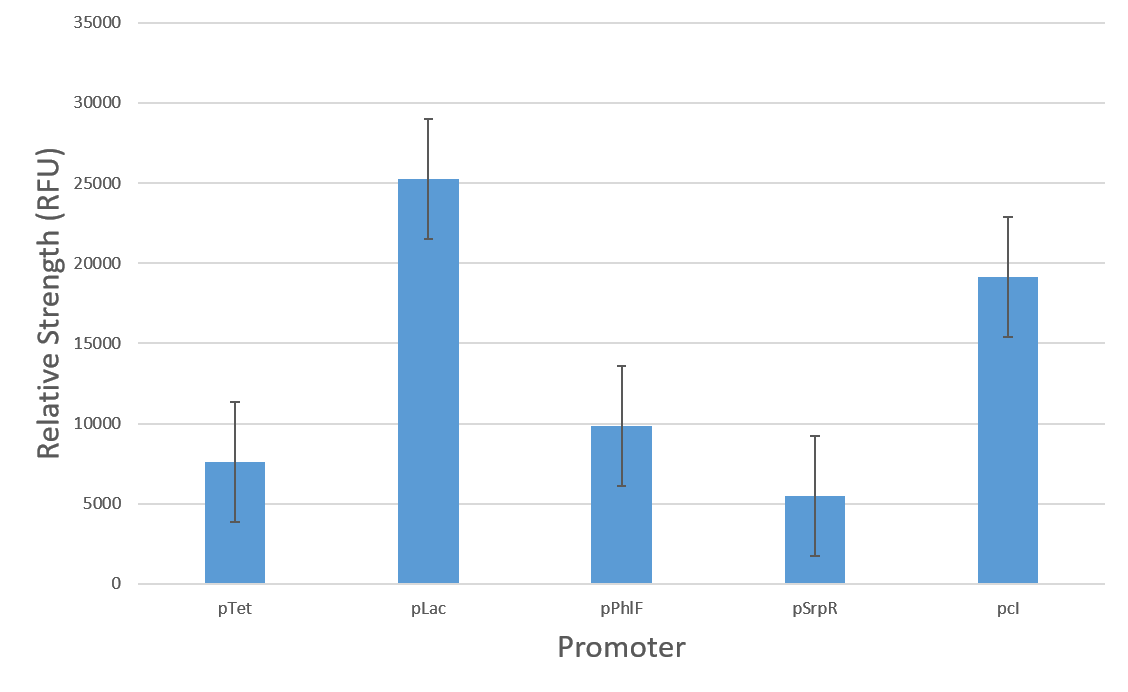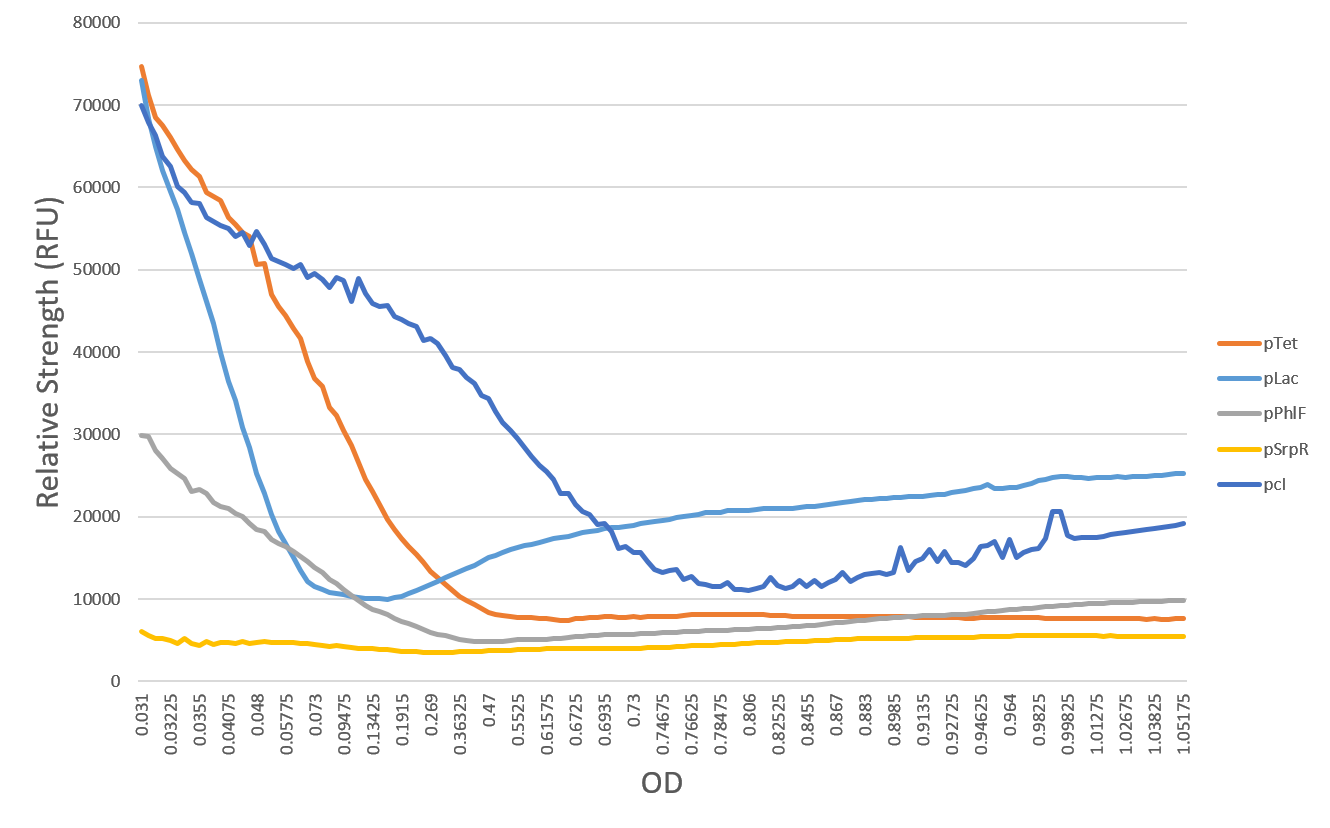Part:BBa_K1725020
SrpR repressible promoter
Sequence and Features
- 10COMPATIBLE WITH RFC[10]
- 12INCOMPATIBLE WITH RFC[12]Illegal NheI site found at 20
- 21COMPATIBLE WITH RFC[21]
- 23COMPATIBLE WITH RFC[23]
- 25COMPATIBLE WITH RFC[25]
- 1000COMPATIBLE WITH RFC[1000]
This promoter was characterised by using it to express GFP with two different Ribosome Binding Sites, as found in the BioBricks BBa_E5501 (GFP with B0032 RBS) and BBa_I13500 (GFP with B0034).
GFP fluorescence of K1725001 (PhlF repressible promoter.I13500), K1725002 (PhlF repressible promoter.E5501), K1725021 (K1725020.I13500), K1725022 (K1725020.E5501), K1725082 (TetR repressible promoter.I13500), and E5504 (TetR repressible promoter.E5501) with plasmid backbone pSB3K3 was measured to compare the relative strengths of promoters K1725000 (PhlF repressible promoter) and K1725020 to a promoter already well documented in the registry, R0040 (TetR repressible promoter). Figure 1 the fluorescence scan image and a graph of approximate molecules of GFP per cell. These results indicated that K1725000 is a significantly stronger promoter than R0040 or K1725020.

Figure 1. All constructs with pSB3K3 plasmid backbone, in DH5α cells. Replicates of constructs and controls from three colonies, under the same conditions. Mean and standard deviation of replicates were calculated to give value and error bars.
IIT Delhi 2017 - Characterization of Promoter Strength
We see in Fig. 1 that the decreasing order of strengths for the five repressible promoters is pLac, pcI, pPhlF, pTet and pSrpR. This is also evident in Fig. 2 when all the 5 promoters settle to a steady state. Fig. 3 depicts the protein production rates for the promoters. pLac has the largest production rate reaffirming its highest strength. However, despite dominating completely in terms of protein production rate, we see in Figs. 2 and 4 that in the initial transient phase, pLac has lower relative strength compared to pTet and pcI. This is due to the highest dilution rate for pLac in this regime, which can be seen in Figs. 5 and 6. Similar arguments can be made about pcI.
As shown in Fig. 2, pLac and pcI have three distinct regions of behavior in terms of relative strength over time. In the initial transient phase, dilution rate is higher than the protein production rate, thus we see that relative strength per OD decreases over time. The middle corresponds to overcompensation phase, where protein production rate surpasses the dilution rate. Finally, the relative strength settles a steady state value, entering an exact compensation between protein production and dilution rates. Contrary to pLac and pcI, the other promoters don’t exhibit the overcompensation phase.
| None |






